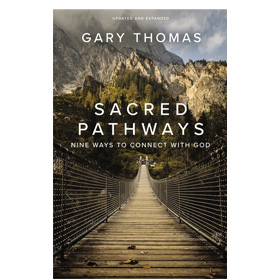 By Gary Thomas
By Gary Thomas
Gethsemane holds a sacred place in faith history. It is the hallowed piece of ground on which Jesus prayed just before he was arrested. Churches don’t normally talk much about Gethsemane apart from Passion Week, but the reason Gethsemane had such a monumental role in that famous week is precisely because it had such a huge and formative role in Jesus’ life prior to Passion Week. Consider the report of John in John 18:1–2,
“When he had finished praying, Jesus left with his disciples and
crossed the Kidron Valley. On the other side there was a garden,
and he and his disciples went into it.
“Now Judas, who betrayed him, knew the place, because
Jesus had often met there with his disciples.”
Luke backs this up: “Jesus went out as usual to the Mount of Olives, and his disciples followed him” (Luke 22:39, italics added).
It wasn’t an accident that Judas found Jesus in the garden; the betrayer naturally thought, “Where is Jesus most likely to be found?” He felt certain that Jesus would seek solace in the garden of Gethsemane, and he was right.
Jesus had used the garden on numerous occasions to meet with his Father, to gain spiritual strength, and to receive his marching orders. Long before Passion Week, Gethsemane was a sacred space of refuge, refreshment, healing, intimacy, and fellowship—that’s why Jesus went there to prepare for what was about to take place.
[Read the Bible Gateway Blog post, How to Identify Toxic People: An Interview with Gary L. Thomas]
One thing we know for certain: Judas’s betrayal didn’t catch Jesus by surprise. Jesus dismissed Judas, knowing exactly what the betrayer was about to do. Jesus was able to choose where he would spend that crucial time just before the crucifixion. When he needed to pour out his heart to his heavenly Father, to the point of sweating what looked like drops of blood, when he needed to have his will aligned with that same Father, Jesus chose a place with which he was deeply familiar: the garden of Gethsemane.
In fact, Jesus went there every day of Passion Week: “Each day Jesus was teaching at the temple, and each evening he went out to spend the night on the hill called the Mount of Olives” (Luke 21:37).
The experience of Gethsemane is unique to Jesus. None of us will ever have a moment like that. But in using this sacred space, Jesus leaves an example to follow. When you need to hear from God, when you need to be strengthened by God, when you need to receive your marching orders from God, where do you go?
For some of you, it may indeed be a garden, or perhaps a place in a local forest. Others of you may prefer a sanctuary. Still others may find prayer solace with a musical instrument in your hands. But do you have a place, or a moment, where you best meet with God in those times when you most need him?
Prayer and Ministry Go Hand in Hand
What I appreciate about using Gethsemane as a metaphor for meeting with God is that it portrays a vivid example of the balance between intimacy and mission, prayer and work. I can’t think of Gethsemane without being moved by the intimate communion between Son and Father. On the other hand, this garden is also the scene of intense spiritual preparation for the most important work ever done.
In a healthy Christian life, prayer and ministry go hand in hand. As we build intimacy with God in prayer, he communicates his love for us, but he also gives us our marching orders. In this way, prayer feeds our sense of mission and renews the urgency behind that mission. Likewise, Christian work—whether it is evangelism, administration, teaching, discipleship, or something else—reminds us of our need for God’s strength and thus drives us further into prayer.
[Read the Bible Gateway Blog post, Sacred Marriage: An Interview with Gary Thomas]
When we get too caught up in ministry and cut corners in our devotional time, the results can be disastrous. We begin to minister with the wrong motivations, risk losing our passion, and often are tempted to make it all about us instead of all about God.
The image of Gethsemane reminds me that I need to tend to my heart. When I give God the opportunity to speak into my heart, he motivates me to work—for the right reasons. Working diligently, I’m reminded of my need to receive my acceptance, favor, and strength from God. In this way, prayer and ministry together become a spiraling, upward staircase of devotion.
Where is your Gethsemane?
My prayer is that by the time you finish reading Sacred Pathways, you’ll know.
________
 Adapted from Sacred Pathways: Nine Ways to Connect with God by Gary Thomas. Click here to learn more about this book.
Adapted from Sacred Pathways: Nine Ways to Connect with God by Gary Thomas. Click here to learn more about this book.
Sacred Pathways reveals nine distinct spiritual temperaments—and their strengths, weaknesses, and tendencies—to help you improve your spiritual life and deepen your personal walk with God.
It’s time to strip away the frustration of a one-size-fits-all spirituality and discover a path of worship that frees you to be you. Experienced spiritual directors, pastors, and church leaders recognize that all of us engage with God differently, and it’s about time we do too.
In this updated and expanded edition of Sacred Pathways, Gary Thomas details nine spiritual temperaments and—like the Enneagram and other tools do with personality—encourages you to investigate the ways you most naturally express yourself in your relationship with God. He encourages you to dig into the traits, strengths, and pitfalls in your devotional approach so you can eliminate the barriers that keep you locked into rigid methods of worship and praise.
Plus, as you begin to identify and understand your own temperament, you’ll soon learn about the temperaments that aren’t necessarily “you” but that may help you understand the spiritual tendencies of friends, family, and others around you.
Whatever temperament or blend of temperaments best describes you, rest assured it’s not by accident. It’s by the design of a Creator who knew what he was doing when he made you according to his own unique intentions. If your spiritual walk is not what you’d like it to be, you can change that, starting here. Sacred Pathways will show you the route you were made to travel, marked by growth and filled with the riches of a close walk with God.
Gary Thomas is a writer in residence at Second Baptist Church in Houston, Texas, and an adjunct faculty member teaching on spiritual formation at Western Seminary in Portland, Oregon, and Houston Theological Seminary in Houston, Texas. He is the author of nineteen books, including When to Walk Away, Sacred Pathways, Cherish, and Sacred Marriage—over one million copies sold. He has a master’s degree from Regent College and was awarded an honorary doctorate in divinity from Western Seminary. Gary has spoken in forty-nine states and ten different countries.
The post Where Is Your Sacred Space of Refuge? appeared first on Bible Gateway Blog.










